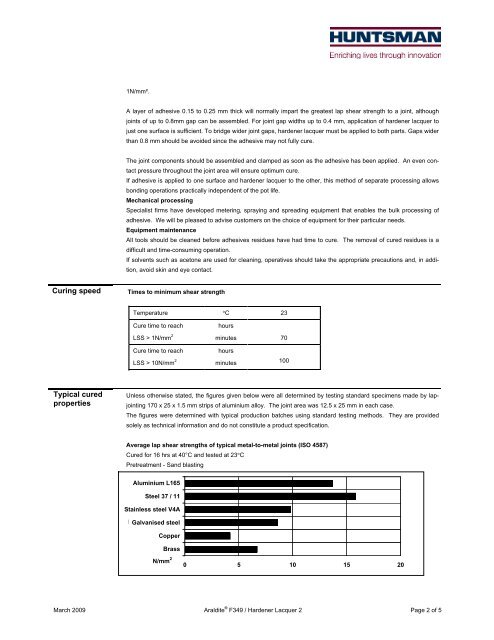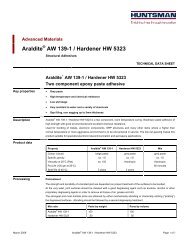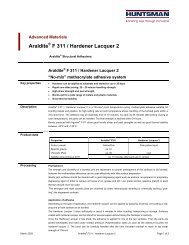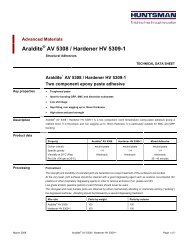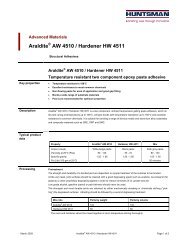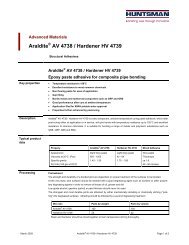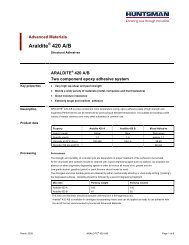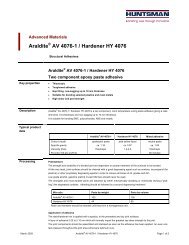Araldite F349 / Hardener Lacquer 2 - DanLube
Araldite F349 / Hardener Lacquer 2 - DanLube
Araldite F349 / Hardener Lacquer 2 - DanLube
- No tags were found...
You also want an ePaper? Increase the reach of your titles
YUMPU automatically turns print PDFs into web optimized ePapers that Google loves.
1N/mm².A layer of adhesive 0.15 to 0.25 mm thick will normally impart the greatest lap shear strength to a joint, althoughjoints of up to 0.8mm gap can be assembled. For joint gap widths up to 0.4 mm, application of hardener lacquer tojust one surface is sufficient. To bridge wider joint gaps, hardener lacquer must be applied to both parts. Gaps widerthan 0.8 mm should be avoided since the adhesive may not fully cure.The joint components should be assembled and clamped as soon as the adhesive has been applied. An even contactpressure throughout the joint area will ensure optimum cure.If adhesive is applied to one surface and hardener lacquer to the other, this method of separate processing allowsbonding operations practically independent of the pot life.Mechanical processingSpecialist firms have developed metering, spraying and spreading equipment that enables the bulk processing ofadhesive. We will be pleased to advise customers on the choice of equipment for their particular needs.Equipment maintenanceAll tools should be cleaned before adhesives residues have had time to cure. The removal of cured residues is adifficult and time-consuming operation.If solvents such as acetone are used for cleaning, operatives should take the appropriate precautions and, in addition,avoid skin and eye contact.Curing speedTimes to minimum shear strengthTemperature C 23Cure time to reachhoursLSS > 1N/mm 2 minutes 70Cure time to reachhoursLSS > 10N/mm 2 minutes 100Typical curedpropertiesUnless otherwise stated, the figures given below were all determined by testing standard specimens made by lapjointing170 x 25 x 1.5 mm strips of aluminium alloy. The joint area was 12.5 x 25 mm in each case.The figures were determined with typical production batches using standard testing methods. They are providedsolely as technical information and do not constitute a product specification.Average lap shear strengths of typical metal-to-metal joints (ISO 4587)Cured for 16 hrs at 40°C and tested at 23 CPretreatment - Sand blastingAluminium L165Steel 37 / 11Stainless steel V4AN Galvanised steelCopperBrassN/mm 20 5 10 15 20March 2009 <strong>Araldite</strong> ® <strong>F349</strong> / <strong>Hardener</strong> <strong>Lacquer</strong> 2 Page 2 of 5


